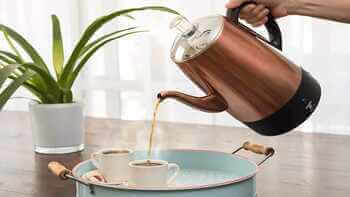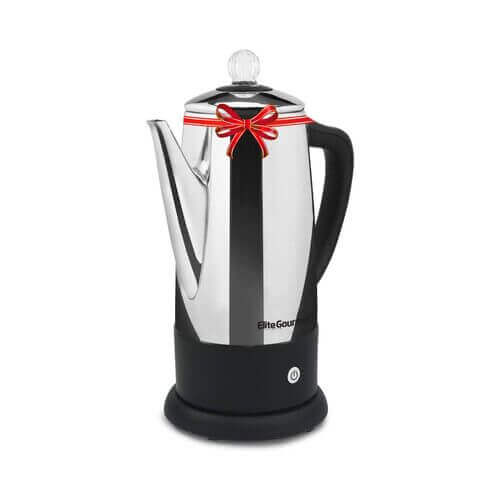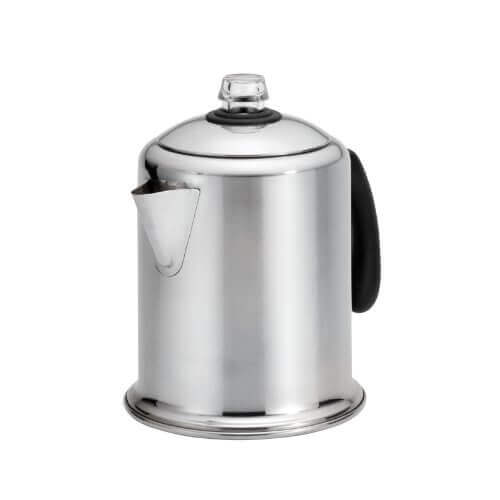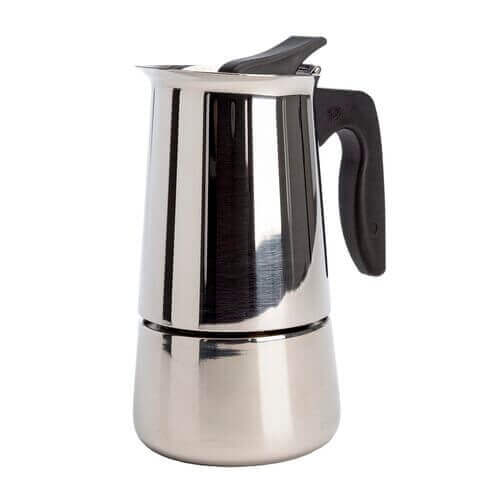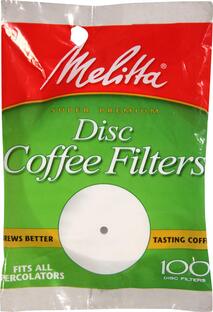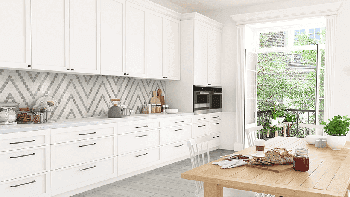Are you a coffee enthusiast who can’t do without a bold, full-bodied cup of coffee? You’re sure to love coffee brewed using a percolator, then. But, before you get your hands on a coffee percolator, have a look at this comprehensive guide we’ve put together for you. In this article, we’ll discuss the different types of percolators available, whether you need a special coffee for percolator use, the type of coffee that works best with a percolator, and how to make the perfect cup of coffee with a percolator.
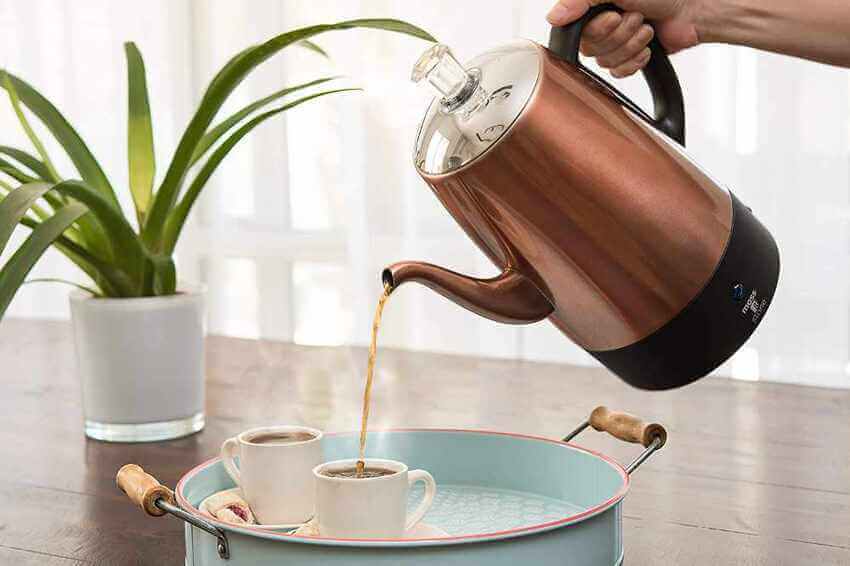
What is a percolator?
Percolators are a classic and timeless way to brew coffee. For those who haven’t used one before, a percolator is a type of coffee brewing device that uses a process of drip brewing (a repeating cycle of boiling and dripping) to produce coffee.
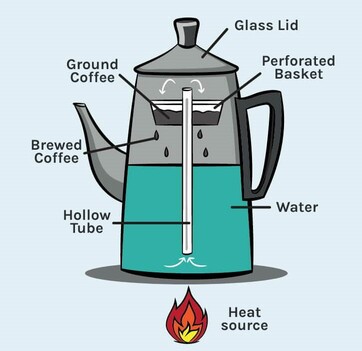
It consists of a pot with a chamber at the bottom for holding ground coffee, and a vertical tube that extends from the chamber to the top of the pot. Hot water is poured into the chamber and flows through the coffee grounds, extracting the flavors and aromas of the coffee as it percolates, or flows, up through the tube and into the pot. The brewed coffee then collects in the pot and is ready to be served. This method of brewing coffee results in a bold, rich, and creamy cup of coffee.
Percolators come in a variety of sizes and styles, and can be made of materials such as stainless steel, aluminum, or glass. Some percolators have a built-in heating element to keep the coffee warm, while others must be placed on a stove or other heat source to brew. Percolators can be used to make both regular and decaffeinated coffee, and are often preferred by coffee enthusiasts for their ability to produce a strong, full-bodied cup of coffee.
Types of percolators
Percolators come in a few different styles. Each type of percolator has its own unique brewing method and produces coffee with different flavor profiles. Electric percolators are plugged in and use electricity to heat and brew the coffee, while stovetop percolators are placed on the stove to heat and brew the coffee. Manual percolators require the user to manually pump water through the coffee grounds using a hand crank. Espresso percolators are specifically designed to brew espresso, while French press percolators use a plunger and filter to brew coffee.
It’s important to note that the pros and cons of each type of coffee percolator will vary depending on individual preferences and needs. Here are some potential pros and cons of the different types of percolators:
Electric Percolators
An electric percolator is a type of coffee maker that uses electricity to heat water and brew coffee. It works by heating water in a chamber and forcing it up through a tube and over the ground coffee beans, which are contained in a basket or filter. The water then drips back down through the coffee and into a carafe or pot, where it is collected and served.
Electric percolators come in a range of sizes and styles, and can be used to make both small and large batches of coffee. Some models also have features like temperature control and automatic shut-off, making them easy to use and convenient for everyday use.
Try Now: Elite Gourmet Electric Coffee Percolator
Pros
- Can be plugged in and operated without having to monitor the brewing process
- Often have automatic shut-off features for safety
- Can brew coffee quickly and efficiently
Cons
- May not produce as much flavor as other methods
- Can be more expensive to operate due to the need for electricity
- May not be as durable as other types of percolators
Stovetop Percolators
A stovetop percolator is a type of coffee maker that is designed to be used on the stovetop. It consists of a pot with a chamber for heating water and a basket or filter for holding the ground coffee beans. To use a stovetop percolator, you fill the chamber with water, add the ground coffee to the basket, and place the pot on the stove to heat. As the water heats up, it is forced up through a tube and over the coffee beans, where it picks up the flavor and aroma of the coffee. The brewed coffee then drips back down through the coffee and into the pot, where it is ready to be served.
Stovetop percolators are a popular choice for making coffee because they are relatively simple to use and can produce a strong, flavorful cup of coffee.
Try Now: Primula Today Aluminum Stove Top Percolator
Pros
- Can be used on a stove or other heat source
- Often produce a rich and flavorful cup of coffee
- Can be more affordable than electric percolators
Cons
- May require more attention and monitoring during the brewing process
- May not be as convenient as electric percolators
- May not be suitable for use on certain types of stoves or heat sources
Manual Percolators
A manual percolator relies on a heat source (other than electricity) and a manual operation to brew the coffee. To use a manual percolator, you fill the chamber with water, add the ground coffee to the basket, and place the pot on the heat source. As the water heats up, you must manually lift and lower a plunger or “belly” in the pot to create the percolating action that brews the coffee. The brewed coffee then drips back down through the coffee and into the pot, ready to be served.
Try Now: Farberware Classic Stainless Steel 12-Cup Coffee Percolator
Pros
- Can be used without electricity
- Often produce a rich and flavorful cup of coffee
- Can be more affordable than electric percolators
Cons
- May require more effort and physical labor to operate
- May not be as convenient as electric percolators
- May not be suitable for people with limited mobility or dexterity
Espresso Percolators
An espresso percolator is a type of coffee machine that is specifically designed to brew espresso. Espresso is a type of coffee that is made by forcing hot water through finely ground coffee beans under high pressure. To brew espresso, you need a machine that is capable of generating enough pressure to extract the flavors and aromas from the coffee beans.
An espresso percolator is a type of machine that uses a combination of heat and pressure to brew espresso. It consists of a chamber for heating water, a portafilter for holding the ground coffee beans, and a steam wand or frother for frothing milk. To use an espresso percolator, you fill the chamber with water, add the ground coffee to the portafilter, and place the portafilter in the machine. The machine then uses heat and pressure to force hot water through the coffee beans and into a cup or mug, creating a concentrated shot of espresso. Some espresso percolators also have a steam wand or frother that can be used to froth milk for drinks like cappuccinos and lattes.
In short, an espresso percolator is a specialized type of coffee maker that is designed specifically for brewing espresso. It uses heat and pressure to extract the flavors and aromas from the coffee beans and create a concentrated shot of espresso.
Try Now: Primula Stainless Steel 6 Cup Espresso Maker
Pros
- Can produce a high-quality cup of espresso
- Often have a sleek and modern design
Cons
- May be more expensive than other types of percolators
- May require more attention and skill to operate
- May not be suitable for people who do not drink espresso
French Press Percolators
A French press, also known as a cafetière or coffee press, is a type of coffee maker that uses a simple brewing process to produce a full-bodied, flavorful cup of coffee. It consists of a cylindrical glass or stainless steel pot with a plunger and a metal or nylon mesh filter. To use a French press, you add coarsely ground coffee beans to the pot, pour hot water over the beans, and let the coffee steep for a few minutes. Then, you press the plunger down to separate the brewed coffee from the grounds and serve.
A French press is sometimes referred to as a “percolator,” although it does not use the percolation brewing method like traditional percolators do. Instead, it uses a process called immersion brewing, where the coffee beans are fully immersed in hot water and allowed to steep for a set amount of time. This produces a stronger, more full-bodied cup of coffee than percolation, which passes hot water through the coffee beans but does not fully immerse them.
Overall, a French press is a simple and effective way to brew coffee that produces a rich, flavorful cup. It is a popular choice among coffee enthusiasts who appreciate the control it gives them over the brewing process and the ability to customize the strength and flavor of their coffee.
Try Now: Stanley The Stay-Hot French Press
Pros
- Can produce a rich and flavorful cup of coffee
- Often have a sleek and modern design
Cons
- May require more skill to operate
- May not be suitable for people who do not drink coffee made with a French press
Do you need special coffee for a percolator?

Contrary to popular belief, you don’t really need a special kind of coffee for percolator brewing. Any type of ground coffee can be used, whether it’s regular ground coffee, espresso grind, or even a blend. However, the type of coffee you use can affect the flavor and strength of the final cup of coffee.
Percolators use a process called percolation to brew coffee, which involves forcing hot water through ground coffee beans to extract their flavor and aroma. Because percolation can extract more flavor from the beans than other brewing methods, it is important to use a coffee that is suitable for percolation.
In general, it is best to use a medium to coarse grind of coffee in a percolator. A medium grind will produce a well-balanced, flavorful cup of coffee, while a coarse grind will produce a weaker but smoother brew. Using a fine grind in a percolator can result in a bitter, over-extracted cup of coffee, as the fine grounds can easily clog the filter and cause the water to pass too quickly through the coffee, extracting too much flavor.
As for the type of coffee beans, you can use any type of beans in a percolator, including dark roast, medium roast, and light roast. The roast level will impact the flavor and strength of the coffee, with darker roasts generally producing a stronger, bolder flavor and lighter roasts producing a milder, more nuanced flavor. Experimenting with different roast levels and grind sizes can help you find the combination that works best for your taste preferences.
Overall, it is important to use a suitable grind size and quality coffee beans in a percolator to ensure a good cup of coffee. Using the wrong grind size or poor quality beans can result in an over-extracted, bitter brew.
Best coffee for percolator
There is no one “best” type of coffee for percolator use. The type of coffee that is best for you will depend on your personal preferences, including the flavor and strength you prefer.
In general, medium-coarsely ground coffee works well in a percolator, as it allows the water to easily flow through the grounds and extract the coffee’s flavor.
Try Now: Gevalia Guatemala Medium Roast Coarse Ground Coffee
You can experiment with different types of coffee beans, grind sizes, and amounts to find the combination that works best for you.
Some popular types of coffee for percolator brewing include medium-roast beans, which provide a balanced, smooth flavor, and dark-roast beans, which have a bolder, richer flavor.
Here are our top picks for you to try:
Medium-Roast
Maxwell House The Original Roast Medium Roast Ground Coffee
Dark-Roast
Death Wish Coffee Dark Roast Grounds
Ultimately, the best type of coffee for your percolator will be the one that tastes the best to you!
How to make coffee with a percolator
Making coffee with a percolator is a simple process. Here’s a step-by-step guide on how to make coffee with a percolator:
1. Gather necessary materials and ingredients
To brew coffee using a percolator, you will need a percolator, ground coffee, water, a heat source, and a mug or cup to serve the coffee in. You may also want to have a spoon or other utensil for stirring the coffee, and a coffee filter if your percolator does not have one built-in.
Here’s a popular coffee filter by Melitta that you can buy now:
2. Grind coffee beans
Start by grinding your coffee beans to a medium-coarse grind. The grind size will affect the flavor and strength of your coffee, so experiment to find the grind that works best for you.
3. Boil water
Next, bring a pot of water to a boil on your heat source. You will need enough water to fill your percolator, plus a little extra to account for evaporation.
4. Add ground coffee to percolator basket
Once the water is boiling, carefully add the ground coffee to the percolator basket. The amount of coffee you use will depend on the strength of coffee you prefer and the size of your percolator. As a general rule, start with 1-2 tablespoons of coffee per cup of water, and adjust as needed.
5. Place percolator basket in percolator
Once the coffee is in the basket, carefully place the basket into the percolator. Make sure the basket is securely in place, and the percolator is properly sealed.
6. Pour hot water into percolator
Next, pour the hot water from your pot into the percolator, filling it to the desired level. Be careful not to overfill the percolator, as this can cause the coffee to overflow and make a mess.
7. Place percolator on heat source
Once the coffee for percolator has been added and the pot is filled with water, place it on your heat source. Be sure to use a heat-safe surface, and keep the percolator away from the edge of the stove to prevent accidents.
8. Monitor percolation process
As the water heats up, it will begin to percolate through the coffee grounds and into the pot below. This process can take several minutes, depending on the strength of coffee you are making. Keep an eye on the percolator, and adjust the heat as needed to maintain a steady, gentle bubbling.
9. Remove percolator from heat source when desired strength is reached
When the coffee has reached the desired strength, carefully remove the percolator from the heat source. Be careful, as the percolator and its contents will be hot.
10. Pour and enjoy your coffee
Once the percolator is off the heat, carefully pour yourself a cup of coffee. You may want to use a coffee filter or other straining device to catch any grounds that may have made their way into the pot. Once your coffee is poured, add any cream, sugar, or other toppings as desired, and enjoy your freshly brewed cup of coffee!

Frequently Asked Questions
If you have any other questions or would like to share something, please feel free to comment below. I would love to hear from you.
You may also like: AICOOK Juicer Review (2022)

